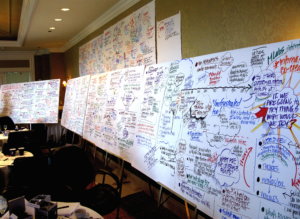 Nowadays, more and more eLearning project managers lean towards agile methodology. As opposed to traditional project management approaches, agile methods let you adjust your courses as you go based on the need. Agile project management is an iterative method of managing the design and development activities for eLearning projects. The best part about agile project management is that it embraces change even late in the development phase.
Nowadays, more and more eLearning project managers lean towards agile methodology. As opposed to traditional project management approaches, agile methods let you adjust your courses as you go based on the need. Agile project management is an iterative method of managing the design and development activities for eLearning projects. The best part about agile project management is that it embraces change even late in the development phase.
The main difference between agile and traditional approaches is that agile method reduces complexity of a project by specifying and managing small usable chunks of the project as opposed to managing the whole project at the same time. In agile method, team members handle most of the assignments, are responsible for managing their chunk of the project, and are accountable for quality control of their piece of the project.
To ensure success of any project, agile project managers are responsible for managing the team’s environment and encouraging decision making among team members. In other words, while the main role of a traditional project manager is to manage cost, time, and scope of the project, the main role of an agile project manager is to act as a facilitator to empower the team to achieve results.
So, does agile methodology work for all organizations? Just like with everything else, there is no one size fits all. However, the agile approach has a lot of benefits that all organizations should consider. Some of these benefits are higher customer satisfaction, improved performance among team members, reduced risk of project failure, and better project quality.
Want to know more about writing effective user stories and the Agile process in general? Get my Agile ELearning Development book and start developing your courses the Agile way!

Thanks for the post.. interesting information. So how does it work in the eLearning industry where the yesteryear ADDIE has been followed.. Are there any examples or case studies that can share the nuances of AGILE method in eLearning…